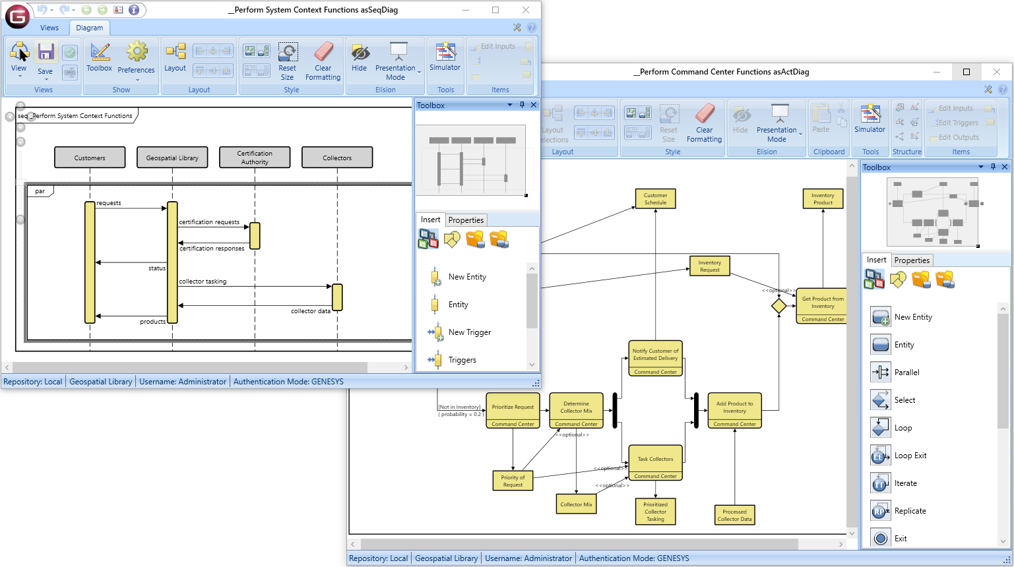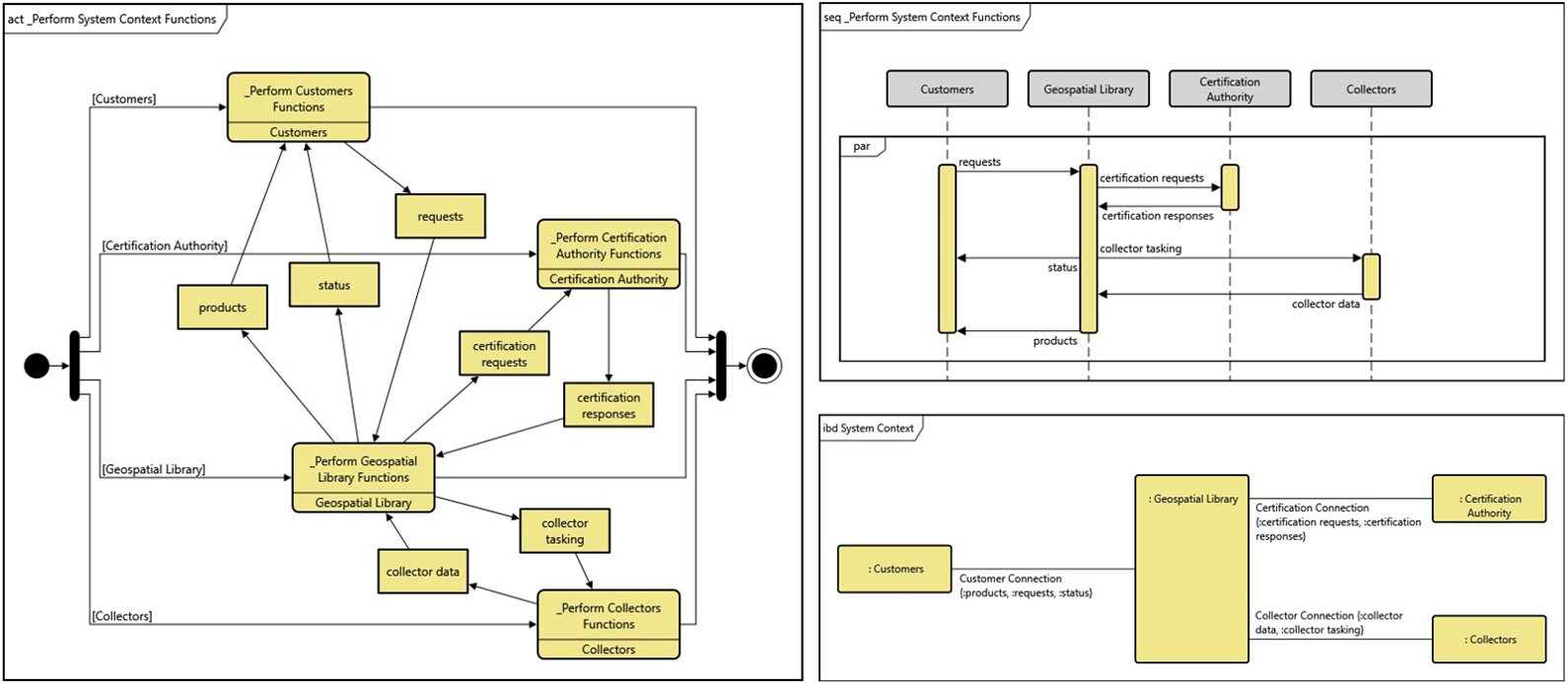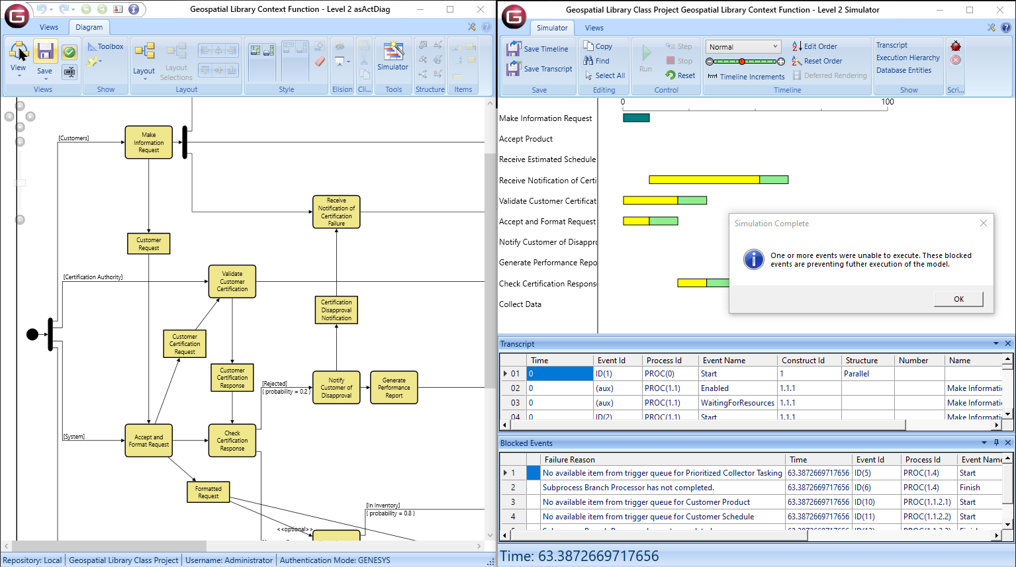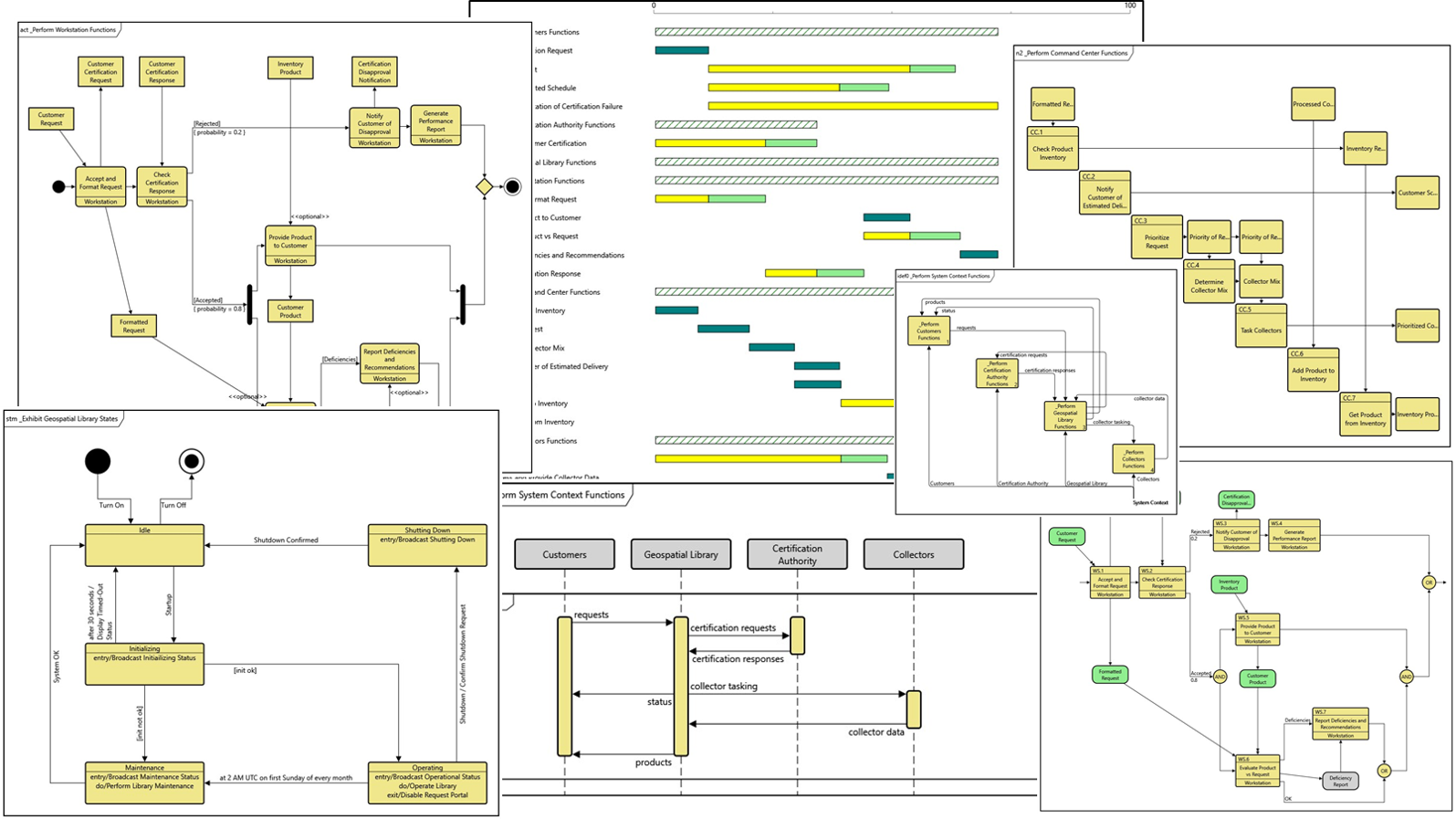“A system is, and a system does.”
We often think of the why behind a system (the requirements) and the how of a system (the implementation in hardware, software, people, process, and policy). Systems engineering recognizes the leverage of working in the behavioral space of what a system must do to satisfy the requirements. Even more, systems engineering recognizes the necessity of maintaining alignment between behavior and implementation: “behavior is allocated to components; components perform behaviors.”

Vitech’s software helps define both sides of the architecture – the behavioral and the physical – and the alignment between them. Model behavior graphically with the ease of drawing a flow chart. (The software will not allow you to specify anything invalid.) Decompose to greater levels of detail while maintaining consistency with higher levels of abstraction. Validate behavior dynamically – no code required – to confirm the behavior satisfies your system needs.
With Vitech’s powerful software, the modeling of behavior is robust and nuanced:
Traceability and consistency are built into the design.
In order for your model to be useful, each behavior element must be traceable through all levels as well as throughout the lifecycle of your project. With Vitech’s software, a solid metamodel underpins your work, making traceability – to requirements, to implementation, and to greater detail – a cinch. All observables, whether under decomposition or aggregation, are preserved. Inputs and outputs, sequencing, and the number of and conditions for exits and performance are all preserved and traceable, ensuring that your design remains consistent and valid as you advance.
Dynamically validate behavior in the tool.
Done right, model-based systems engineering allows you to validate your model continuously along the way. Accelerate development by identifying and addressing design defects early. Explore more design options by quickly testing the validity and performance of multiple options. GENESYS allows you to simulate your behavior from the first moment of design, allowing your system model to serve as a virtual system prototype. Far more than animation, this simulation checks for deadlock conditions, timing, resource contention, and overloaded links. When problems arise, debug your system logic directly rather than debugging a disconnected simulation that may or may not accurately represent the full depth of your system specification.
Visualize – and construct – your behavior through an extensive portfolio of diagrams.
Behavior reflects the processes within a system, their sequencing and structure, and their exchanges. Leveraging a diverse library of views allows you to focus on the area of interest for analysis or communication. Vitech’s software enables you to specify, modify, analyze, and communicate behavior through a rich blend of diagrams based upon your needs and preferences. Begin with an activity diagram to define the structure of the behavior. Switch to a sequence diagram to highlight exchanges between subsystems. Leverage an N2 for clustering analysis. Use an enhanced functional flow block diagram to communicate with stakeholders. And do it all knowing that GENESYS maintains consistency between the views, automatically generating each visualization from the underlying behavioral architecture with 100% consistency.
Model in depth, complementing rich diagrams with external models and code.
In GENESYS, the behavioral architecture can be dynamically validated from day 1 regardless of which diagrams you use. Built upon a robust semantic model, the behavior is simulated without need for code-behinds or other detailed specifications. But sometimes you want to complement robust visual specifications with more detailed models. Within GENESYS, you can write scripts using standard languages such as VB.NET to specify advanced logic for durations, path selections, and more. Or, invoke external models directly from GENESYS to connect your system specification with high fidelity detailed models.






